As we age, the idea of moving to a new home or facility can feel overwhelming, even frightening. It’s not just about the change in surroundings, but the uncertainty about losing our independence, comfort, and control. The good news? You don’t have to move anywhere — you can stay right where you are and adapt your home to meet your evolving needs. Planning for aging in place isn’t just a decision — it’s an opportunity to live life on your own terms for as long as possible. So, why wait? Let’s talk about why planning now can make all the difference. What Is Aging in Place? Aging in place means staying in the home you love, with the necessary modifications, support, and services that allow you to live safely and comfortably as you grow older. This includes making adjustments to your environment, routines, and healthcare needs. By planning ahead, you can create a living space that supports your physical, emotional, and social well-being , all without having to uproot your life. Why Is Planning for Aging in Place So Important? As we age, our needs change . We might experience physical changes like reduced mobility, vision loss, or hearing impairment. We may also develop medical conditions that require special equipment or care. When those changes happen, having a home that accommodates those needs can dramatically improve your quality of life . Here’s why planning for aging in place makes sense: 1. You Remain in Control There’s nothing more comforting than knowing you have a plan for your future that keeps you in charge of your home, your routines, and your independence . It’s about being proactive, not reactive. 2. Safety and Independence The right home modifications can prevent falls, make everyday tasks easier, and help you stay independent for longer. Simple changes like grab bars, better lighting, and safer flooring can reduce your risk of injury and keep you comfortable. 3. Emotional Well-Being There’s emotional comfort in staying in a familiar place. Aging in place lets you remain in your community , surrounded by family, friends, and memories. This stability is linked to better mental and emotional health. 4. Cost-Effective Moving to an assisted living facility or nursing home can be costly. Aging in place is often more affordable , and you have the flexibility to make small, budget-friendly improvements over time. Plus, staying in your own home eliminates many of the ongoing costs of other housing options. How Can You Plan for Aging in Place? It’s easier than you think. Starting early — before a crisis happens — can ensure that your home will continue to support you as your needs evolve. Here’s how you can begin planning: Home Safety Assessment The first step is a home safety assessment . This helps identify potential risks and accessibility barriers in your home. Our team at House-Calls conducts detailed assessments and creates a custom report with suggestions for changes, ranging from simple fixes to larger renovations. Accessibility Improvements Look at the things that might become challenging as you age — things like stairs, bathtubs, and countertops. Adjustments such as widening doorways , adding lever-style door handles , or installing a walk-in shower can make a world of difference. Health and Wellness Planning Think about the health care services you may need — both now and in the future. This could include things like physical therapy , meal delivery , or at-home support for tasks like cleaning, medication management, or meal prep. Social and Emotional Support Planning for aging in place isn’t just about the physical environment. It’s about creating a support system of family, friends, and community resources. Stay connected and ensure that you have people in your corner, whether it’s for company, transportation, or assistance when needed. The Earlier You Start, the Better It’s never too early to start thinking about how your home can best support you as you age. In fact, starting early allows you to make gradual changes, rather than waiting until a health issue forces an immediate change. As a senior, it’s empowering to know that you can continue living independently, surrounded by what you love. But it requires a little foresight and planning. At House-Calls , we specialize in helping seniors like you assess their homes and make the right adjustments. Whether you’re already noticing small changes or just want to ensure you’re prepared for the future, we’re here to support you. Ready to Plan Ahead for Your Future? If you want to know more about how to make aging in place work for you, we’d love to help. House-Calls offers free consultations and home safety assessments that can help you create a plan that’s uniquely suited to your needs. 👉 [ Schedule a Call ] or [ Book Your Home Safety Assessment Today ] Your home should be a place of comfort, safety, and independence. Let’s make sure it is.

You’ve built a life in your home — full of comfort, routines, and memories. It’s where you feel most like you. But as the years go on, even the most familiar space can start to challenge your balance, comfort, or independence. That’s why more and more seniors are choosing to take a proactive step: a home safety assessment . It’s not about giving up control — it’s about staying in control. What Is a Home Safety Assessment? A home safety assessment is a room-by-room evaluation of your home, led by a certified aging-in-place specialist. At House Calls , we come to your home (or do a virtual assessment) to help identify risks — and more importantly — opportunities to make your space safer, more comfortable, and better suited to your needs. We listen to how you live and move, and create a personalized safety report full of suggestions, from quick fixes to long-term planning. What Do We Look At? Entrances & Walkways Are steps clearly marked and evenly spaced? Could handrails, ramps, or non-slip surfaces improve safety? Is there sufficient lighting at night or during bad weather? Bathrooms Would a grab bar, walk-in shower, or raised toilet seat increase safety? Are towel bars being used as support (which can be dangerous)? Is there enough contrast between walls, fixtures, and floors? Kitchens Are frequently used items easy to reach? Could drawer pulls or knobs be replaced with easier-to-use options? Is flooring slip-resistant and level? Living Areas & Bedrooms Is furniture positioned for easy movement with a walker or cane? Are rugs secured or removed to prevent tripping? Could lighting be adjusted for better visibility and night safety? Door Handles, Knobs & Switches Are round knobs hard to turn? Lever-style handles may help. Are light switches reachable and easy to use? Paint Colours & Contrast Poor contrast can make it harder to see depth or steps. We evaluate how colour schemes and lighting impact visual clarity , especially for those with cataracts or vision loss. Stairs & Railings Are railings secure — on both sides if needed? Is there adequate lighting and clear edge visibility on each step? Outside Spaces Are patios, driveways, and garden paths free of hazards? Could raised garden beds, outdoor handrails, or lighting make the space more usable and enjoyable? Renovation Opportunities We also identify areas where renovations might make sense — either now or in the future. This could include: Widening doorways for a walker or wheelchair Installing a walk-in tub or zero-threshold shower Lowering countertops Creating a main-floor living space if stairs become difficult You’ll receive all this in a clear, prioritized report , so you can plan changes at your pace, based on your goals. When Should You Get One? You don’t need to wait for a fall, injury, or health scare. In fact, the best time to get a home safety assessment is before something happens . Think of it like getting your car serviced before a road trip — it’s about prevention, not panic. Whether you’re fully independent or just noticing small changes in your vision, balance, or mobility, a home safety assessment can help you plan ahead with dignity and confidence. Why It’s Worth It At House Calls, we believe aging should be about living well , not limiting yourself. Most of the improvements we recommend are simple, affordable, and can be done without any major renovations. We’ve helped many people like you stay in the homes they love — longer, and with fewer worries. Because we understand that staying safe at home doesn’t just protect your body… it protects your freedom. Ready to Take the Next Step? If you’re curious, let’s talk. We offer free, no-obligation calls to explain how it works and answer any questions. 👉 [ Book a Free Call ] or [ Schedule Your Assessment Today ] Your home should support the life you want to live — we’re here to help make sure it does.

When your aging parent or grandparent comes to visit, you’re not just setting up the guest room — you’re making space for comfort, safety, and peace of mind. Whether it’s for a weekend stay, a month-long visit or weekly visits, your home can quickly become a haven or a hazard, depending on how prepared you are. At House Calls, we specialize in helping families adapt their spaces so aging in place (or aging while visiting) feels natural — not stressful. Here are seven easy, low-cost ways to make your home safer before your loved one arrives: 1. Light the Way Aging eyes need more light to see clearly. Add nightlights in hallways, bathrooms, and bedrooms to reduce nighttime falls. Swap out dim bulbs for brighter, soft-white ones, especially near stairs and entrances. 2. Eliminate Trip Hazards Small changes make a big impact. Remove or secure throw rugs, clear cluttered walkways, and tuck away cords. What seems like “just a little clutter” to you could be a serious fall risk for someone with limited mobility or poor depth perception. 3. Check the Bathroom Bathrooms are one of the most dangerous rooms in the house for seniors. A non-slip mat in the shower or tub and a grab bar near the toilet can go a long way. If your loved one is staying more than a few days, consider adding a raised toilet seat or a shower chair. 4. Rearrange Essentials Make commonly used items easy to reach. That means snacks, medications, toiletries, and reading glasses should be stored at waist height — no bending or stretching required. 5. Support Safe Seating Choose firm chairs with arms for sitting and standing support. If your couch or guest bed is too low or too soft, your loved one may struggle to get up. Test seating before they arrive to ensure comfort and ease. 6. Secure the Entryway Make sure your walkway is well-lit and clear of debris. If you have steps, check that the handrail is sturdy. Consider adding a welcome mat with a non-slip backing or removing mats entirely to avoid bunching underfoot. 7. Do a Walkthrough — From Their Point of View Slow down. Imagine navigating your home with sore joints, blurry vision, or a walker. You’ll likely notice small issues you’ve overlooked — like tight spaces between furniture or a tricky threshold. Fix what you can, and flag anything bigger. Want a Simple Checklist to Follow? We’ve created a FREE, room-by-room Family Home Safety Checklist for people just like you — adult children, grandchildren, and caregivers who want to prepare their own homes for aging loved ones. 👉 [ Download the checklist here ] and make sure your space is safe, welcoming, and ready — for this visit and the many more to come.

